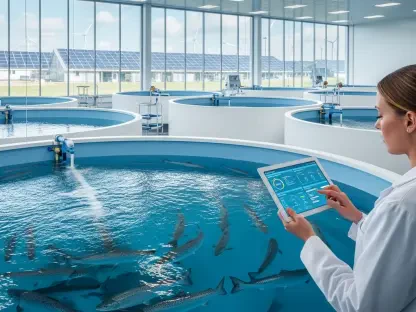The landscape of industrial robotics in the U.S. saw interesting developments in 2023, as documented in the International Federation of Robotics’ World Robotics 2024 report. Despite witnessing a 5% decline in new industrial robot installations during the year, the total number of robots in active use reached a record high of 381,964, underscoring the sector’s resilience and steady growth. This decline is significant, yet the third-highest number of installations on record testifies to the enduring importance of robotics in the manufacturing sector.
Market Leadership and Sectoral Trends
The automotive industry continues to be the largest market for industrial robots in the U.S., capturing 33% of all installations. However, the sector witnessed a 15% drop in sales compared to 2022, aligning with the historical average over the last decade. On the other hand, sectors such as metal processing and machinery manufacturing saw an uptick in new robot installations, increasing by 8% to reach 4,171 units. The electrical and electronics manufacturing industries also noted a minor rise of 1%, totaling 3,900 new units over the year.
North American Dynamics: Canada and Mexico
North American dynamics revealed interesting trends, particularly in Canada and Mexico, influenced by near-shoring activities. The Canadian automotive industry experienced a remarkable 95% increase in robot installations from 2022 to 2023, with 2,500 units now making up 58% of all new robots installed that year. Conversely, Mexico observed a 5% decline in automotive sector installations, although the country still accounted for 4,087 new units and maintained a significant 70% share of total installations.
Broader Implications and Future Outlook
The World Robotics 2024 report presents a mixed but largely optimistic view of the industrial robotics landscape. While there was a downward trend in new installations, the substantial increase in total operational robots and sector-specific growth—particularly in metal processing and machinery manufacturing—signal a stable yet evolving industry. Enhanced machine-to-network connectivity and new control technologies for digital manufacturing are driving continuous innovation and improvement in industrial automation. These advancements could mitigate future declines in installations and propel growth.
Moreover, the positive impact of near-shoring, especially evident in Canada, highlights promising regional trends that may influence overall North American market dynamics. The slight decrease in new installations should be viewed in the context of the broader, optimistic trends in the industry.
Conclusion
In 2023, the U.S. industrial robotics landscape underwent notable changes, as highlighted in the International Federation of Robotics’ World Robotics 2024 report. Although there was a 5% decrease in new industrial robot installations for the year, the total number of robots actively in use soared to a record-setting 381,964. This statistic not only indicates the sector’s resilience but also its steady growth over time. The decrease is important to note, yet the fact that it represents the third-highest number of installations on record underscores the crucial role that robotics continues to play in manufacturing. Additionally, these numbers reflect advancements in automation technologies and their widespread adoption across various industries. The ongoing investments and innovations within this sector suggest that companies are prioritizing automation to improve efficiency and competitiveness. Despite a minor downturn in new installations, the overall rise in the number of operational robots demonstrates the sector’s persistent expansion and its significant impact on modern manufacturing processes.









